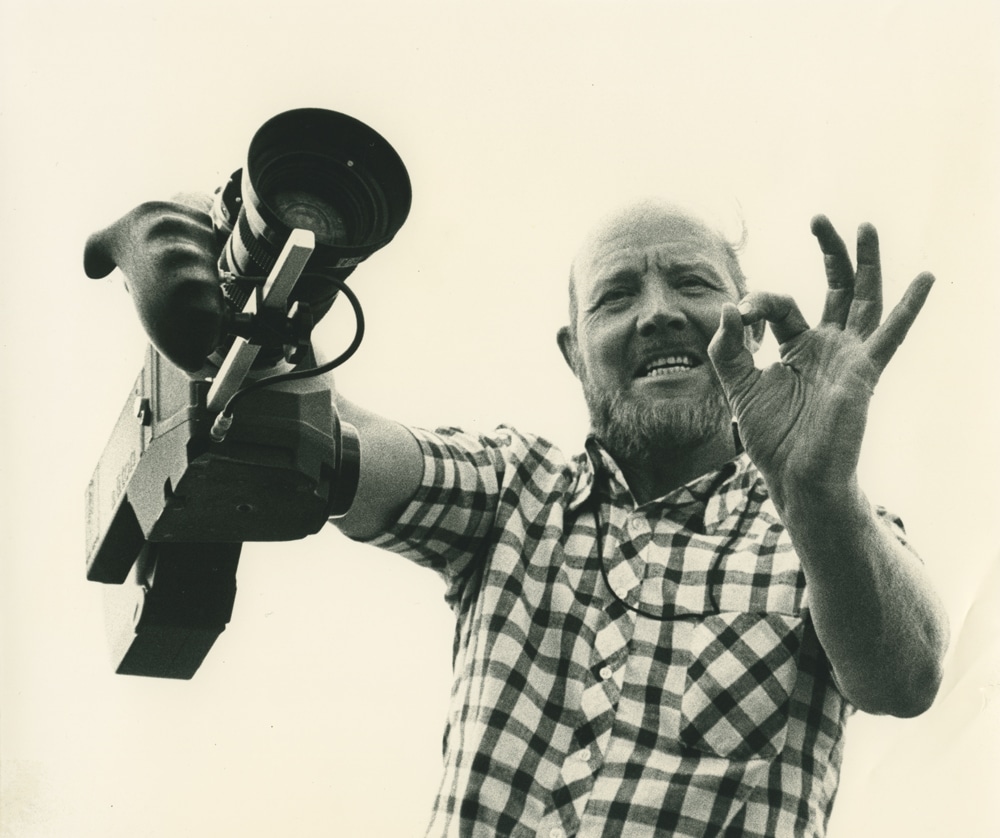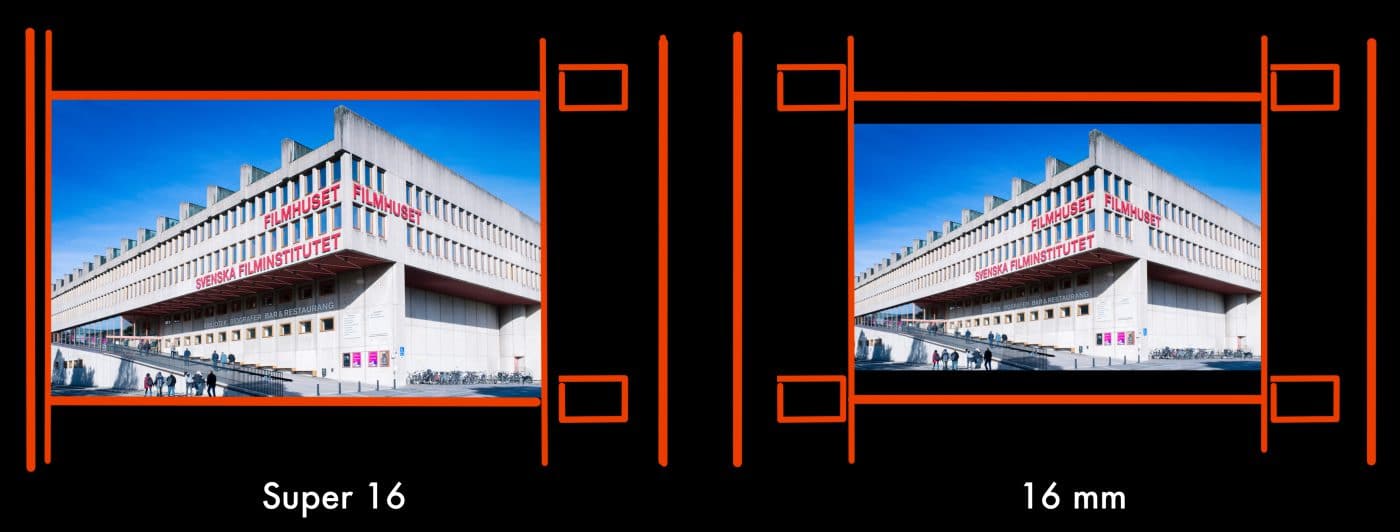
Supersmart: Rune Ericson and Super 16

Per Sundfeldt, editor, the Swedish Film Database
What does Kathryn Bigelow’s Oscar winner The Hurt Locker have in common with Vilgot Sjöman’s Blushing Charlie from 1970?
Answer: They were both filmed with Super 16 mm cameras—invented by Swedish cinematographer Rune Ericson in the 1960s.
The “Nationalencyclopedin” dictionary states that Ericson made his invention for Sjöman’s above-mentioned title but there is more to it than this, although Blushing Charlie was indeed the first feature shot in Super 16 to open in cinemas. In the mid-1960s Ericson had begun working with Mai Zetterling, and was to be the director of photography on all her Swedish features from Night Games (1966) and onwards. It was when they were planning a feature meant to be their first collaboration, which ended up not being made, that he came up with the idea for Super 16. The film was to be shot in Iceland and 35 mm cameras would have been too heavy and bulky for the shots they intended. The alternative would have been to use 16 mm cameras but since they wanted the film’s image to be in widescreen this would have meant a loss of image quality if they first had to crop the 1.33:1 size area from the 16 mm negative down to 1.66:1 (European widescreen image ratio) before blowing the result up optically for 35 mm prints.
Ericson realized that he could make use of a larger part of the negative’s surface by filming with single sprocket 16 mm film stock, in a modified camera given a larger aperture which could take advantage also of the unperforated side of the film. In this way he would be able to make widescreen films with an image quality very close to that of films shot in 35 mm. An added benefit would be substantial savings on the cost of film stock as 16 mm film was much less expensive. It was a win-win situation.

A couple of years of experiments followed, during which Ericson received assistance and support from the Filmteknik laboratory and from Lars Svanberg at the Department of Technical Research at the Swedish Film Institute. Then Ericson was contacted by Vilgot Sjöman who had heard about “RuneScope,” as Ericson’s colleagues jokingly referred to his invention. The film Sjöman was planning at the time was to be shot inside the boat where the main protagonist lived, as well as inside the cab of the truck where he worked. Super 16, as envisioned, would be perfect for the task. Sjöman and Ericson managed to persuade the production company Sandrews to invest in the project, which turned into the film Blushing Charlie, and it was shot—gingerly—with a single prototype: The world’s first Super 16 camera. After this, things moved along rather rapidly and Super 16 took on a life of its own. The periodical American Cinematographer dedicated much of its June issue of 1970 to Super 16. The cinematographer and director Haskell Wexler visited Ericson in Stockholm and the documentarian Albert Maysles also got in touch, as did representatives of laboratories and camera-makers from various parts of the world. Everybody was suddenly interested in Super 16, but some time naturally had to pass before some initial glitches were worked out and before manufacturers of film stock, cameras and other technical equipment, as well as the laboratories were on track.
Rune Ericson subsequently became the Scandinavian sales agent for the French company Aaton’s Super 16 cameras, while continuing to work as cinematographer on feature films. He also continued to invent, among other things the 3-perf system that utilises 35 mm film stock much more efficiently, but that is another story. In 2002 he received an Award of Commendation from the American Academy of Motion Picture Arts and Sciences for his invention of Super 16.
Over the years there has been quite a lot of features shot in Super 16, not least in Sweden of course, and foreign filmmakers apart from Bigelow who have embraced it include Darren Aronofsky (The Wrestler, Black Swan), Mike Figgis (Leaving Las Vegas), Wes Anderson (Moonrise Kingdom), Apichatpong Weerasethakul (Uncle Boonmee Who Can Recall His Past Lives) and Gaspar Noé (Irréversible).
(published in November 2017)
A selection of Swedish features made in Super 16
-
The first Super 16 film received an award at the Berlin Film Festival and the lead actor Bernt Lundquist, who also co-wrote the script, won the Swedish Chaplin Award. Cinematography by Rune Ericson.
-
Torgny Wickman's sequel to his internationally infamous Kärlekens språk. He also made the third film in the series, Kärlekens XYZ, in Super16. Cinematography by Lasse Björne.
-
Adaptation of a Per Gunnar Evander novel, by Jan Halldoff. Both the director and the director of photography received the Chaplin Award, in addition to Guldbagge Awards for Best Film and Best Actor (Göran Stangertz). Cinematography by Hasse Seiden.
-
Bo A. Vibenius used the pseudonym Alex Fridolinski when he made this "rape and revenge flick" starring Christina Lindberg as the eyepatch-wearing avenger. Cinematography by Andreas Bellis.
-
Lasse Hallström shot his debut feature himself and also made three more features using Super 16 cameras.
-
Staffan Hildebrand's film was panned by the critics but beloved by its young audience. Cinematography by Göran Gester, Lennart Peters and Lil Trulsson.
-
Documentary about the larger than life Swedish athlete Ricky Bruch by Stefan Jarl. Cinematography by Per Källberg.
-
Englishman Colin Nutley's film about the inhabitants of a rural Swedish village won Guldbagge Awards for Best Film, Best Direction and rendered the actor Ernst Günther a special Guldbagge Award. Cinematography by Jens Fischer.
-
The coming of age film about the two teenage girls Elin and Agnes by Lukas Moodysson won Guldbagge Awards for Best Film, Best Direction, Best Script and Best Actress (shared by Alexandra Dahlström and Rebecca Liljeberg). Cinematography by Ulf Brantås.
-
Susanne Bier directed, Jonas Gardell wrote the script and Helena Bergström starred. Cinematography by Morten Søborg.
-
Updated musical version of a play that had been filmed twice before won Guldbagge Awards for Best Film, Best Direction (Ylva Gustavsson and Catti Edfeldt), Best Script (Gustavsson and Hans Renhäll), Best Actor in a Supporting Role (Gustaf Skarsgård) and Best Original Music (Fabian Torsson). Cinematography by Jallo Kekarainen Faber.
-
An up-close documentation of county governor Anders Björck's working days won the award for Best Documentary Feature at the Tempo Festival and was nominated for a Guldbagge Award for Best Documentary. Direction and cinematography by Måns Månsson.
-
Daniel Alfredson's two sequels to The Girl with the Dragon Tattoo (Niels Arden Oplev, 2009) were shot in Super 16, and intended for television but were reworked into features following the world-wide successes of Stieg Larsson's novels and the first film. Cinematography by Peter Mokrosinski.
-
Pernilla August received a Guldbagge Award for Best Direction for this adaptation of a Susanna Alakoski novel. Cinematography by Erik Molberg Hansen.
-
Mikael Marcimain's film after a novel by Klas Östergren was partly shot in Super 16 and received Guldbagge Awards for Best Original Music, Best Make-up and Best Costume. Cinematography by Jallo Kekarainen Faber..














